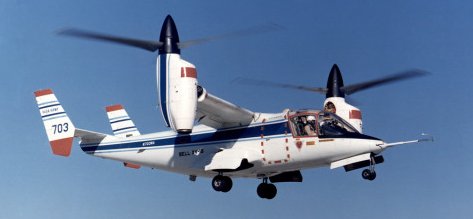Optimising Tilt Rotor Handling Qualities
This PhD project, which commenced in July 2005, is focussed on the development of control strategies to provide optimal handling qualities for tilt rotor aircraft, whose handling qualities limits have been defined during the RHILP and ACT-TILT projects. This work is being continued in the HQ-TILT project, of which this work is a part.
The work will be conducted in two phases, with the first involving the modelling of a new tilt rotor aircraft to join the University of Liverpool's 'family' of tilt rotor aircraft models (part of WP1 of HQ-Tilt). Existing models fall into the small- (5-7 tonnes) and medium- (10-12 tonnes) size categories, while the new model will be of a large tilt rotor (20-30 tonnes). This phase of the project is scheduled to be completed by February 2006, when the first simulation trials using the new model will take place.

The remainder of the project (in WP4 of HQ-Tilt) will focus on the development of control strategies to confer Level 1 handling qualities on all of the tilt rotor aircraft, with the eventual aim that all of the aircraft will exhibit similar handling qualities, thus facilitating rapid pilot conversion from one tilt rotor type to another.
Projected control strategies to be implemented include rate command or attitude command selection (for operation in different visual environments); attitude hold functions (for both pitch and roll), turn coordination and a trim return function. Further pilot aids such as direction hold and position hold functions could also be implemented. Additionally, the control system will be required to improve any handling qualities that are unacceptable, such as the pitch dropback response of the tilt rotor.
Additionally, it is desired to provide carefree handling qualities for pilots, and so the control system must protect against flight envelope exceedances and aircraft limits such as engine torque and rotor hub bending moments.